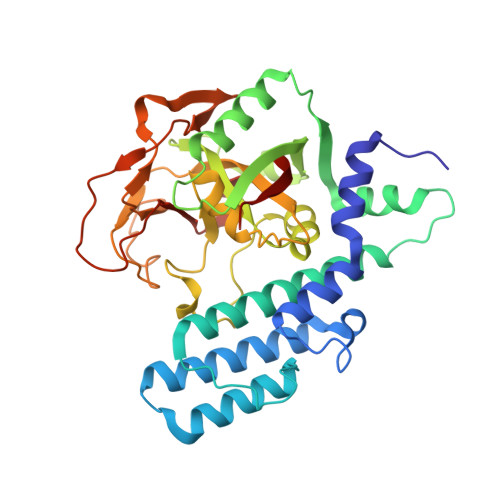Discovery of Quinazoline-2,4(1 H ,3 H )-dione Derivatives Containing a Piperizinone Moiety as Potent PARP-1/2 Inhibitors©¤Design, Synthesis, In Vivo Antitumor Activity, and X-ray Crystal Structure Analysis.
Zhou, J., Du, T., Wang, X., Yao, H., Deng, J., Li, Y., Chen, X., Sheng, L., Ji, M., Xu, B.(2023) J Med Chem 66: 14095-14115
- PubMed: 37843892
- DOI: https://doi.org/10.1021/acs.jmedchem.3c01152
- Primary Citation of Related Structures:
8HE7, 8HE8 - PubMed Abstract:
PARP-1/2 inhibitors have become an important therapeutic strategy for the treatment of HR-deficient tumors. However, discovery of new inhibitors with an improved and distinct pharmacological file still need enormous explorations. Herein, a series of novel highly potent PARP-1/2 inhibitors bearing an N -substituted piperazinone moiety were achieved. In particular, Cpd36 was identified as a distinct PARP inhibitor, showing remarkable enzymatic activity not only toward PARP-1 (IC 50 = 0.94 nM) and PARP-2 (IC 50 = 0.87 nM) but also toward PARP-7 (IC 50 = 0.21 nM), as well as high selectivity over other PARP isoforms. Furthermore, Cpd36 was orally bioavailable and significantly repressed the tumor growth in both breast cancer and prostate cancer xenograft model. The crystal structures of Cpd36 within PARP-1 and PARP-2 together with the predicted binding mode within PARP-7 revealed its binding features and provided insightful information for further developing highly potent and selective PARP-1 and/or PARP-7 inhibitors.
Organizational Affiliation:
Beijing Key Laboratory of Active Substances Discovery and Druggability Evaluation, Institute of Materia Medica, Chinese Academy of Medical Sciences and Peking Union Medical College, Beijing 100050, China.


















